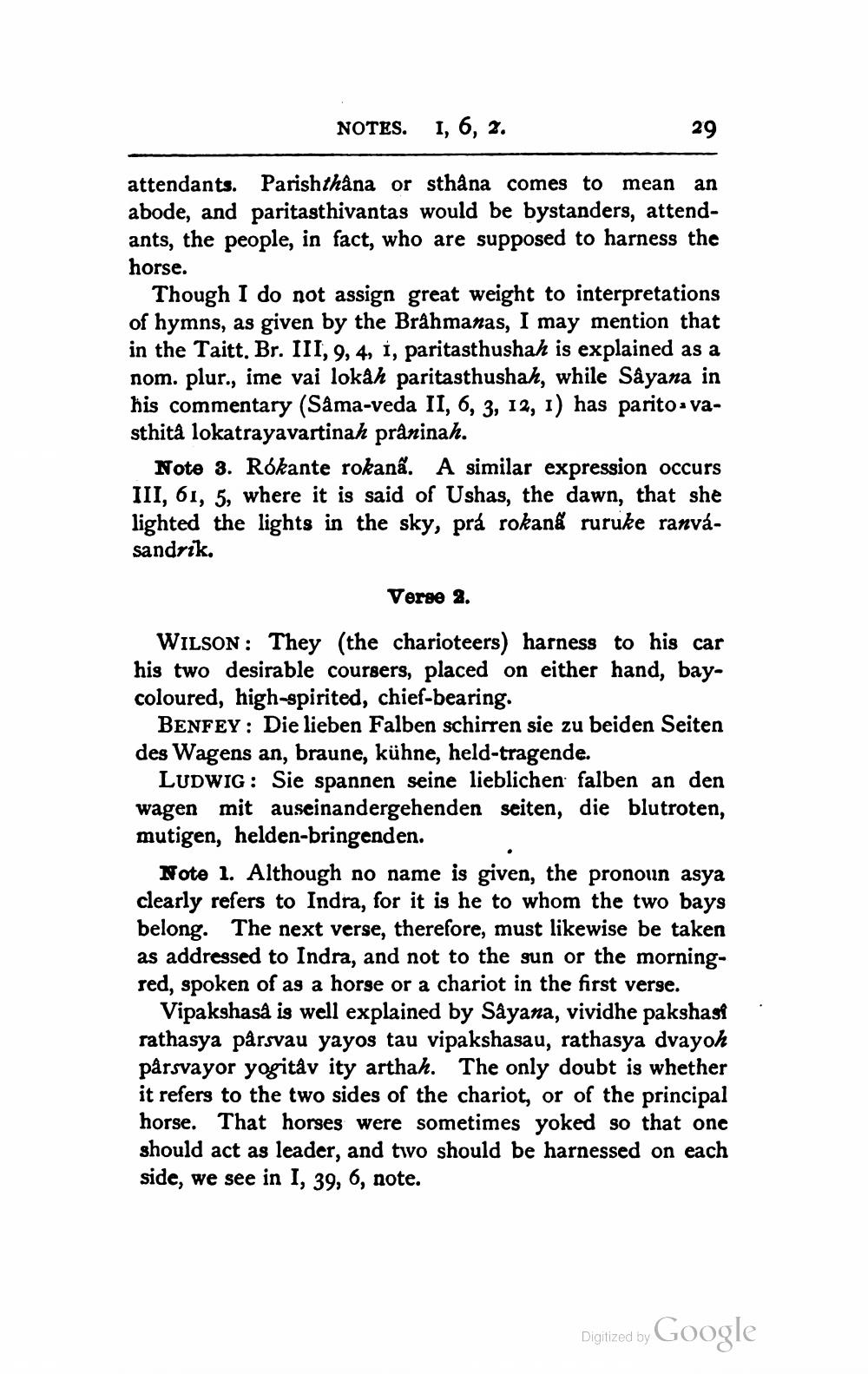________________
NOTES. 1, 6, 2.
29
attendants. Parishthana or sthåna comes to mean an abode, and paritasthivantas would be bystanders, attendants, the people, in fact, who are supposed to harness the horse.
Though I do not assign great weight to interpretations of hymns, as given by the Brahmanas, I may mention that in the Taitt. Br. III, 9, 4, 1, paritasthushah is explained as a nom. plur., ime vai lokah paritasthushah, while Sâyana in his commentary (Sama-veda II, 6, 3, 12, 1) has parito-vasthità lokatrayavartinah praninah.
Note 3. Rókante rokanã. A similar expression occurs III, 61, 5, where it is said of Ushas, the dawn, that she lighted the lights in the sky, prá rokană ruruke ranvásandrik.
Verse 2
WILSON: They (the charioteers) harness to his car his two desirable coursers, placed on either hand, baycoloured, high-spirited, chief-bearing.
BENFEY: Die lieben Falben schirren sie zu beiden Seiten des Wagens an, braune, kühne, held-tragende.
LUDWIG: Sie spannen seine lieblichen falben an den wagen mit auseinandergehenden Seiten, die blutroten, mutigen, helden-bringenden.
Note 1. Although no name is given, the pronoun asya clearly refers to Indra, for it is he to whom the two bays belong. The next verse, therefore, must likewise be taken as addressed to Indra, and not to the sun or the morningred, spoken of as a horse or a chariot in the first verse.
Vipakshasa is well explained by Sayana, vividhe pakshasi rathasya pârsvau yayos tau vipakshasau, rathasya dvayoh pârsvayor yogitav ity arthah. The only doubt is whether it refers to the two sides of the chariot, or of the principal horse. That horses were sometimes yoked so that one should act as leader, and two should be harnessed on each side, we see in I, 39, 6, note.
Digitized by Google




